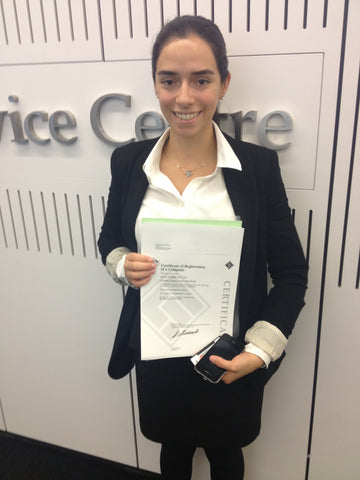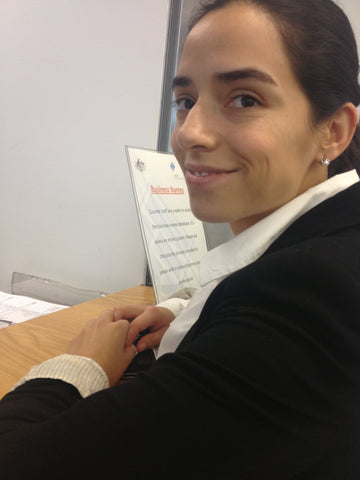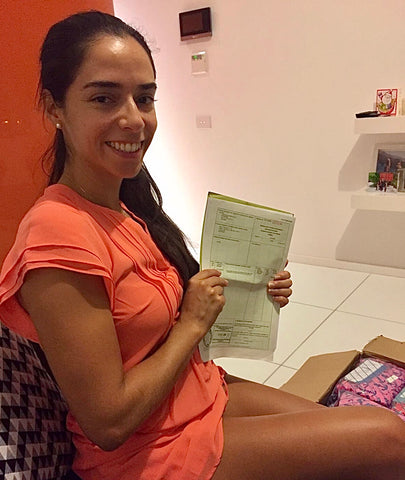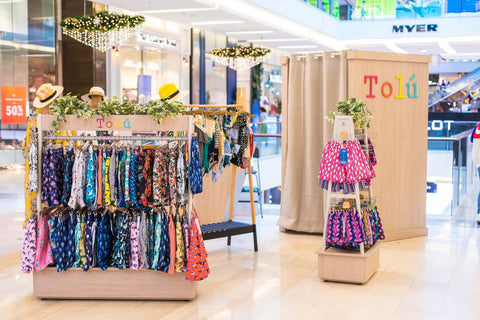
Basic Steps to Set Up a Small Business
Share
Where to Start When Creating a New Small Business
This week I've been asked by four of my friends to give them advice and tips on how to start their small business so, I thought it could be good to share the steps I followed so many people can benefit from it. Please note I'm not an expert, lawyer or accountant, but I would like to share my experience and useful links I used in my journey so it can help you as a guide and hopefully to start amazing business to give the best of yourself to the community.
This business has been my baby for 6 years and it has taught me many things, therefore, I believe its worth to give back to the community by sharing my experience. The process is lengthy but doable so I wish you all the best.
Steps:
1. Have a product/service and a target market in your mind.
- Have very clear the WHY. Why you want to sell it and Why you chose it. I recommend listening to the book "Start with the Why" from Simon Sinek. I personally listened in Spanish on Spotify at Top Audiolibros
2. Choose a name and write it down on a paper.
- Check the name availability of the business name on the ASIC website (Australian Securities & Investment Commission). Use this link.
- And at the same time check the name availability for your future website and email domain. I use Crazy Domains.
- And at the same time check the name availability on social media: instagram, facebook, TikTok, LinkedIn, etc.
- If the name is available then proceed to step 3.
3. Register your company and name.
- Register your company on ASIC: choose the company structure that better suits you. The most popular business structures are a Company and Sole Trader (understand the differences between each one here). In my case I used Company (LTD PTY) and my company is registered as MR OZTRADERS PTY LTD.
- Register the name of your business here. In my case my business name is Tolu Australia.
- Buy a domain for your website and your email: I suggest Crazy Domains. In my case I bought a yearly plan of Tolu.com.au
- Open socials: In my case I opened Instagram: @toluaustralia; Facebook: Toluaustralia; Pinterest: toluaustralia1; LinkedIn company page: tolu-australia; YouTube Channel and Google Business
- Open a business bank account: I suggest using Commonwealth Business Account for Small Business
- Protect your logo and brand by applying for a trade mark. I did it myself. It is costly but lasts 10 years.


These photos were taken on the day I registered my business in ASIC in Sydney CBD in 2013.
4. Bringing/importing your products.
- Get your products pricing correctly: allow at least 100% margin. For instance if the product costs AUD 10 at origin, then your RRP (selling price here in Australia) should be at least AUD 40, but aim for AUD 50 so you can allow for commission, GST, etc. when needed. (I suggest watching this video from The Lot Co about how to calculate your pricing right)
- When bringing the products (importing them), make sure you bring a small quantity first to try the market. I suggest no more than 50 units. Ensure you send them by a courier (I usually use Fedex or DHL for small imports of less than 500kg), and in the box make sure to include a commercial invoice that states your name, your ABN, the description of the item, the HS code and the price in USD or AUD. See an example here.
- If the commercial value in the invoice is less than AUD 1,000, you don’t have to pay tax or duty. If the value of the invoice is more than AUD 1,000 you have to pay duty and tax depending on the HS code of the product (see HS codes and tariffs here).
- Please note there are restrictions on products to enter into Australia (specially if they are food or crafts). See more information here, and also check the needed labelling for products here. If this gets complicated, or your invoice exceeds the AUD 1,000 or you import is more than 500kg I suggest you get the advice of a freight forwarder in Australia. They will help you with the requirements, customs clearance and import process. I used Fedex, DHL and Henning Harders (where I used to work when I graduated from Uni).
- Also, when you bring more than 500kg I suggest bringing your products by sea-freight but bear in mind it could take approx. 3 months depending where the items come from. The Freight Forwarder could also help you with this process.

5. Finding clients and selling the products.
- When the products are here: (or you can do this at origin, depending on what is cost effective): make a photo shoot of deep etch photos (white background and no model) of your products and also lifestyle photos. I suggest this person: Ben Balaz.
- Build a website: I suggest using Shopify. Use the yearly or monthly plan. Make sure you built it correctly by uploading not so big photos. I suggest 1200 x 1200 resolution and named correctly for SEO purposes.and also you could get advice from this Shopify expert: Chana Imsirovic from Owl and Monk. Her Email address is chana@owlandmonk.com.au. It is crucial to have a good website built from the beginning to avoid headaches later on and also learn how to build it yourself so you don’t depend on another developer or person when you need to upload the photos or change anything easy.
- Test the market by applying for markets in your suburb such as Bondi Markets, and Cambridge Markets. To be prepared for the markets buy a Square device or a Smart Mini from Commonwealth to receive card payments.
- Bring cash to give back when people pay with cash.
- Bring business cards with your name, phone and email, socials and a short description of the business
- Go door to door to sell your products into boutiques (note you need to sell your products to the boutiques at 50% less of what you sell to your direct customers. For example if you sell your product at the markets at AUD 50, then you need to sell it to the boutique owner at AUD 25, so the boutique can make a 50% commission).
- Put together a catalogue using Canva.
- If you want to reach more customers in boutiques apply for the LifeInstyle trade fair and sell the products as a wholesaler.

This photo was taken in 2013 selling my Panama Hats at the Bondi Markets.

This is a photo of my first pop-up shop at Bondi Westfield on 2019

This is a photo of my stand at the Cambridge Christmas Markets in December 2023
Lastly, keep motivated, informed, meeting people, attend workshops, network events of your Councils and industries, trade shows, listen books, webinars and get a business coach when needed. I suggest Rebecca Veksler who helped me to redefine my mission, values and marketing goals when I felt a bit stuck in my business.
All the best in your journey!
